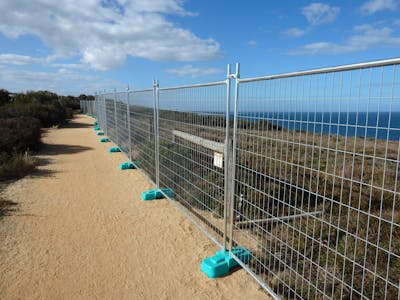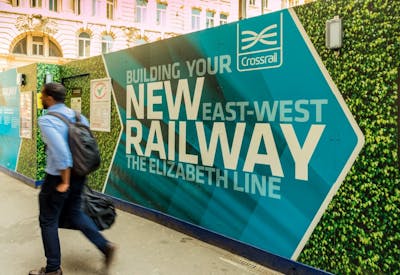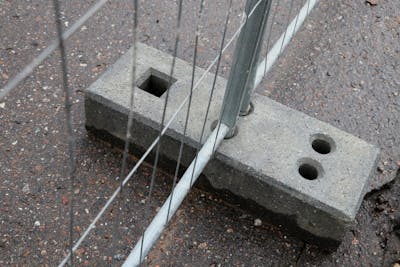Find the Best Temporary Fencing Near You
- Post a job
- Receive multiple quotes
- Choose your preferred Temporary Fencing specialist
Where do you need Temporary Fencing?
Describe your job and our suppliers will send you quotes
Popular Temporary Fencing Locations
Hundreds of Temporary Fencing Suppliers in Australia
Finding reliable fencing contractors for construction sites, outdoor events, or public safety needs is simple with iseekplant. Our extensive network across the country offers temporary fencing solutions that meet Australian standards, from classic chain-link fence panels to control barriers for enhanced visibility and security. Whether you need fencing for a job of any scale, our suppliers ensure a hire period and service that is price guaranteed. Plus, with options to integrate traffic management, you can arrange delivery seamlessly to keep your site safe and organised.
Temporary Fencing Rates Guide
Temporary fencing hire rates can vary based on the hire length, the fencing required, and any additional features, such as gates or privacy screens. To help you budget effectively, we've compiled an average rates guide:
| Fencing Type | Average Weekly Rate | Average Monthly Rate | Average Yearly Rate | Notes |
|---|---|---|---|---|
| Standard | $8 - $12 per metre | $25 - $45 per metre | $260 - $500 per metre | Excludes installation and delivery fees. Long-term hire saves costs. |
| With Gate | $9 - $14 per metre | $28 - $52 per metre | $300 - $600 per metre | Slightly higher cost, ideal for controlled access. |
| Privacy Mesh | $12 - $18 per metre | $35 - $65 per metre | $400 - $750 per metre | Adds privacy and dust control. Installation not included. |
Note: Prices are indicative and may vary based on your location and supplier. All prices on this page exclude GST and are in AUD.
Temporary fencing costs $8–$12 per metre per week, around $400–$600 for 50m for one week. Long-term hire for 50m averages $1,000–$1,200 per year.
Additional Costs to Consider
Here's a quick table of additional costs to give you an idea of your final bill for 100m of temporary fencing for 6 months:
| Cost Type | Average Rate | Description |
|---|---|---|
| Delivery & Pickup | $250 - $450 | Based on distance from the depot, includes transport to and from the job site. |
| Labour for Installation | $120 - $350 | Priced for two installers; rate varies by fence length and site complexity. |
| Damage Waiver | 8% - 12% of hire cost | Optional, covers potential damage during the hire period. |
| Cleaning Fee | 5% - 12% of hire cost | Covers cleaning after project completion. |
| Admin Costs | $85 - $120 | Applied per invoice, covering administrative processing. |
| Overall Damage and Replacement Costs | $120 - $200 | Charges for replacing damaged or missing panels during the hire period. |
For precise pricing and to ensure your temporary fencing meets all requirements, use our Get a Quote tool to connect directly with suppliers ready to meet your project needs.
Temporary Fencing Materials: Making the Right Choice
The material of your temporary fencing plays a pivotal role in its effectiveness, durability, and cost. Here's a breakdown of popular material options, their best price range, and typical applications:
| Material Type | Application | Key Features |
|---|---|---|
| Metal | Construction sites, secure perimeter fencing | Heavy duty, robust, durable, and designed for long life and secure sites. |
| Plastic | Events, quick temporary barriers | Lightweight, versatile, and easily transportable. |
| Mesh | Crowd control, public events | Provides visibility and includes anti climb barriers for safety. |
To ensure optimal performance, regularly inspect clamps and connections during the installation process to avoid gaps and ensure durability.
Get Reliable Temporary Fencing Solutions in Australia
At iseekplant, we connect you directly with verified temporary fencing suppliers across Australia. Whether it's for a construction site, a special event or any project in between, we've got your needs covered with a wide array of fencing options to ensure your site remains safe and secure. And if your project requires more than just fencing, we're here to help. From traffic control services, site security cameras to additional site services, our extensive network means you'll find all the equipment and advice you need in one place.
Need a hand or have questions? Our team is just an email at projects@iseekplant.com.au or a phone call away at 1300 691 912. When you're ready to secure your site with the best temporary fencing around, just hit 'Get a Quote' to get started.
Related Categories
Become a supplier
How It Works
Temporary Fencing FAQs
Here are some frequently asked questions and tips on finding the right chipper supplier for your job.
What do we have to offer?
Want to Know More?

2025 Temporary Fencing Hire Rates | Find suppliers on iseekplant
Hiring starts at $7–$10 per metre per week, so 50m costs about $500 for ...

The Benefits of Hoarding Around a Construction Site
We see construction hoardings every single day. They fade into the backg...

Temporary fencing regulations: Everything you need to know for your construction project
Temporary fencing is everywhere on construction sites throughout Austral...